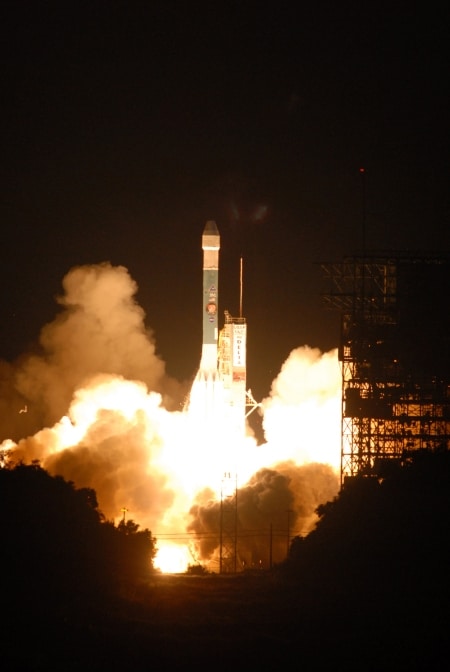NASA’s Phoenix mission to Mars was successfully launched from Cape Canaveral in Florida, US at 5:26 am EDT (10:26 am BST) on Saturday 4 August. After a journey of 679 million kilometres, the spacecraft will touch-down on the red planet in late May next year, when it will begin a three month exploration of its northern polar region. Scientists are hoping that the mission will reveal where Mars’s surface ice comes from, how its climate cycles operate and whether it could be a habitat for microbial life.

The $420 million Phoenix mission, the result of an international collaboration led by the University of Arizona, US, is the first project in NASA’s Mars Scout mission. It started life in 2003 as an attempt to revive the 2001 Mars Surveyor Lander, which was cancelled after the Mars Climate Orbiter and Mars Polar Lander failed in 1999. “We have worked for four years to get to this point, so we are all very excited,” said project manager Barry Goldstein at NASA’s Jet Propulsion Laboratory.
Phoenix will land using descent engines on a site in the northern hemisphere at 68.35° north latitude and 233.0° east longitude. Although these engines have not been used successfully since 1976 – NASA has recently favoured airbag systems – they enable the craft to carry the weight of seven different instruments, some of which were those mothballed from the Mars Surveyor Lander.
First, Phoenix will use a 3.35-metre-long robotic arm to dig into the surface and reach the icy layer residing a few centimetres beneath. Mounted on the end of the arm is a visible-light camera, which will provide high-resolution colour images of the soil and ice.
Samples delivered to the lander by the arm will be heated by a “thermal and evolved gas analyzer” to see how much water vapour, carbon dioxide and volatile organic compounds are contained in the soil. The samples will also be distributed to optical and atomic-force microscopes, which will examine mineral grains, while electrochemistry cells will be able to measure properties such as acidity or alkalinity, and a conductivity probe can check thermal and electrical properties.
Other instruments will look at the wider environment. During descent, a camera will record the geography around the landing site, and after Phoenix has landed a stereo camera will observe the local terrain in 3D. Finally, meteorological equipment will monitor changes in water abundance, dust, temperature and other variables.
“[Saturday’s] launch is the first step in the long journey to the surface of Mars,” said principal investigator Peter Smith of the University of Arizona. “We certainly are excited about launching, but we are still concerned about our actual landing, the most difficult step of this mission.”
NASA is still reviewing proposals for the second Mars Scout mission, due to fly in 2011.




